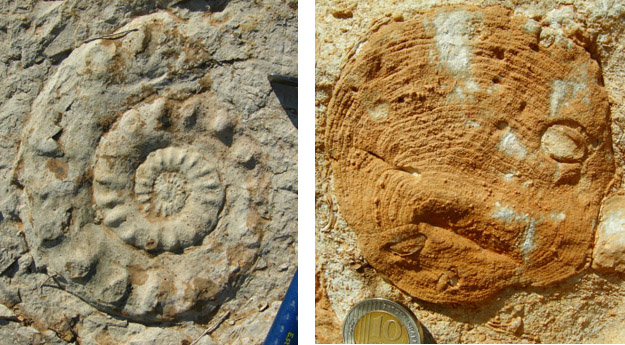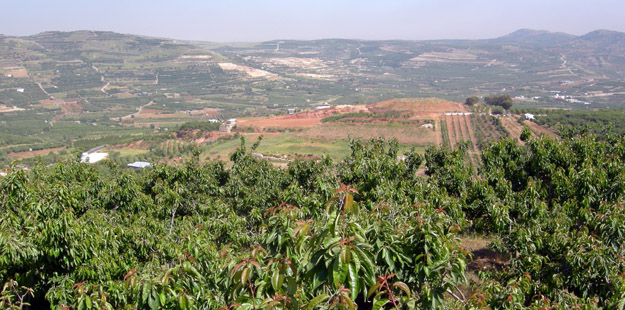I finally got out into the field today. My Israeli colleagues and I left Jerusalem early in the morning and arrived about noon in the Druze village of Majdal Shams on the slopes of Mount Hermon. It is a lovely place with steep hillsides and extraordinary views over green valleys filled with cherry and apple orchards. (I’ll write another post sometime about the complicated politics here, including a long lunchtime lecture I tolerantly received from a Druze man about all the problems in the world coming from “America and the West”. It may have been a good thing that I didn’t quite understand what he was saying until it was explained to me later!)
Our goal today was to examine three marine Jurassic formations (from bottom to top in the geological fashion): the Zohar (mostly limestone), Kidod (mostly shale), and Beersheva (mostly limestone). I had two primary questions: What indications can we find in these rocks of the water depth when they were deposited? What was the intensity of bioerosion of the corals and sponges in these units? Both questions are part of larger studies placing these rocks in context with the rest of the known Jurassic world. This region was on the equator when these units were formed, so we have an unusual opportunity to study Jurassic equatorial ecological conditions.
As is often the case in paleontology, we found some of the best fossils at the boundaries between formations. The top of the Zohar and bottom of the Kidod have wonderful ammonites, belemnites, bivalves, and brachiopods, some appearing to show patterns of microbioerosion. The top of the Beersheva has massive corals and sponges which are thoroughly bored by bivalves, some of which are still in the crypts they excavated for themselves.

On the left is a very large ammonite we found in the top of the Zohar Formation. Note the hammer for scale. On the right is a closer view of a partially silicified coral from the top of the Beersheva with holes drilled in it by bivalves, some of which are still in place.
All the indications we could find showed that the limestone units were clearly shallow water deposits. The thick shales of the Kidod were laid down in deeper waters well below wave base. Much more work is required, though, before we can come to any conclusions. This is a reconnaissance trip to sort out potential projects for Wooster Senior Independent Study students and my own research. I now see many opportunities here.





Pingback: Wooster Geologists » Blog Archive » Wooster’s Fossil of the Week: A stromatoporoid (Middle Devonian of central Ohio)
Pingback: Wooster Geologists » Blog Archive » Wooster’s Fossils of the Week: Belemnites (Jurassic of Wyoming)